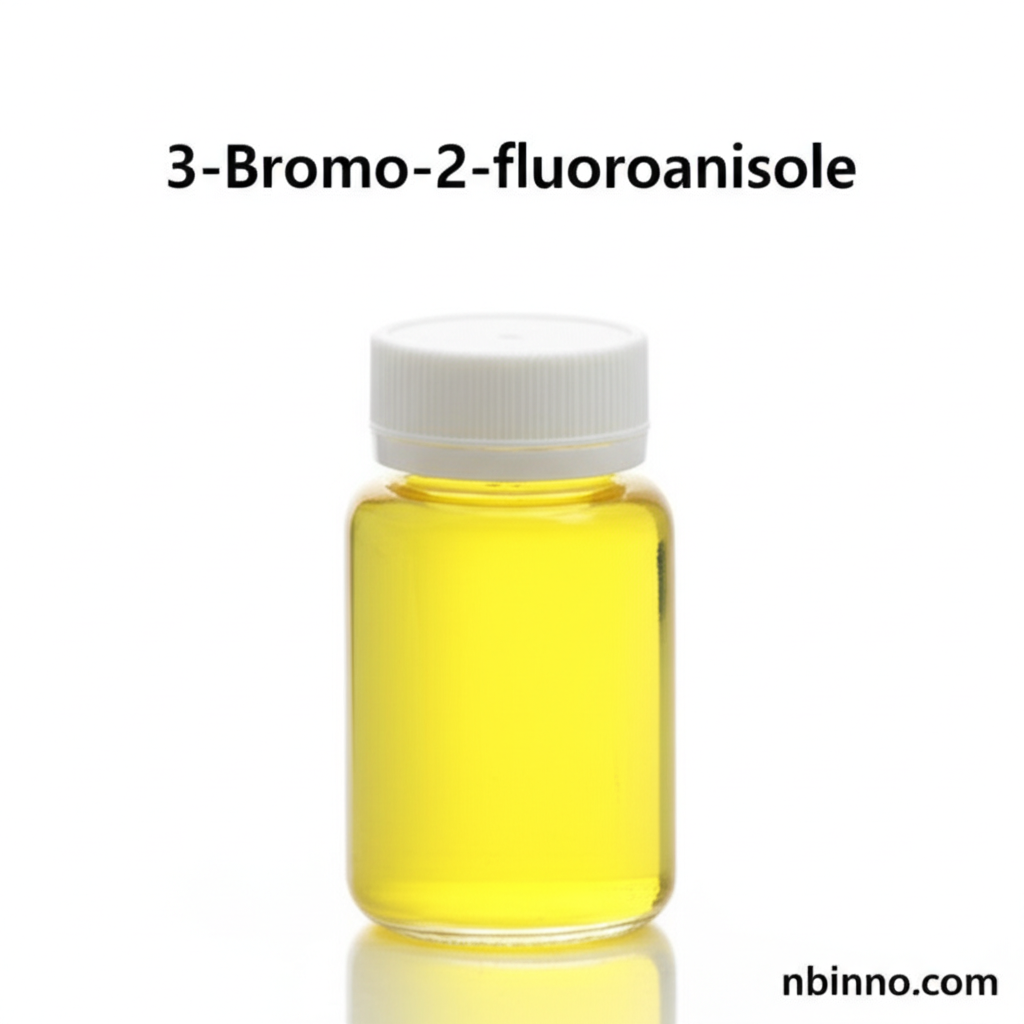3-Bromo-2-fluoroanisole: A Key Intermediate in Pharmaceutical and Agrochemical Synthesis
Explore the versatile applications and chemical significance of this vital organic building block.
Get a Quote & SampleProduct Core Value

3-Bromo-2-fluoroanisole
3-Bromo-2-fluoroanisole, identified by CAS number 295376-21-5, is a crucial organic intermediate with a molecular formula of C7H6BrFO. Its structure, featuring both bromine and fluorine atoms on an anisole backbone, makes it highly desirable for complex chemical syntheses.
- Discover the synthetic utility of 3-bromo-2-fluoroanisole synthesis intermediate in creating novel chemical structures.
- Understand the key CAS 295376-21-5 chemical properties that make this compound a versatile tool for chemists.
- Learn how its role as pharmaceutical building blocks with bromine and fluorine substituents contributes to drug development.
- Explore the diverse applications of organic synthesis intermediates like 2-fluoro-3-bromoanisole in various industrial sectors.
Key Advantages
Versatile Reactivity
The strategic placement of bromine and fluorine atoms on the anisole ring provides unique reactivity, enabling a wide range of chemical transformations in organic synthesis.
Enabling Pharmaceutical Innovation
As a critical building block, it significantly aids in the research and development of new pharmaceuticals, potentially leading to more effective treatments.
Agrochemical Advancements
Its structure can be leveraged to develop advanced agrochemicals, offering improved efficacy and targeted action in crop protection.
Key Applications
Pharmaceutical Intermediates
This compound is extensively used as a key intermediate in the synthesis of active pharmaceutical ingredients (APIs), leveraging its specific chemical structure.
Agrochemical Development
It serves as a precursor for creating novel agrochemicals, where the halogen substituents can confer beneficial properties like increased potency.
Materials Science
The unique electronic and structural properties imparted by the halogens suggest potential applications in advanced materials development.
Custom Synthesis Projects
Researchers often utilize this compound in custom synthesis projects for creating highly specialized molecules with desired properties.
